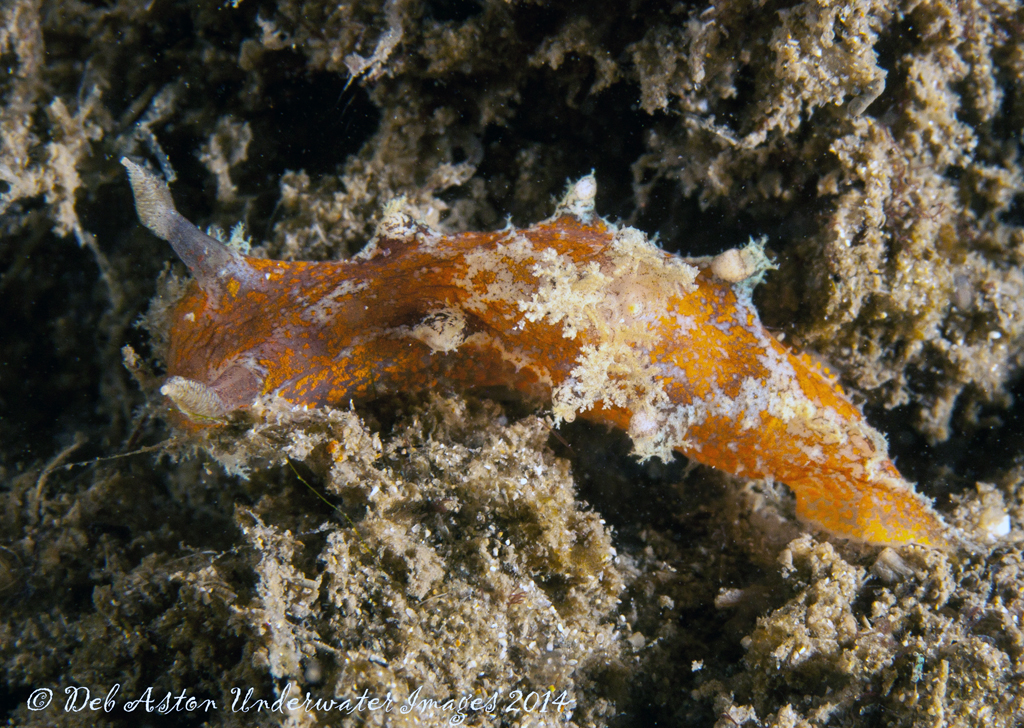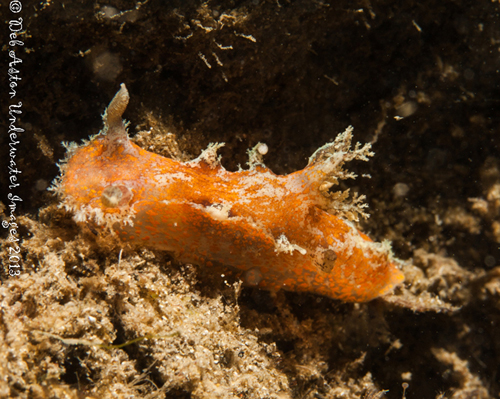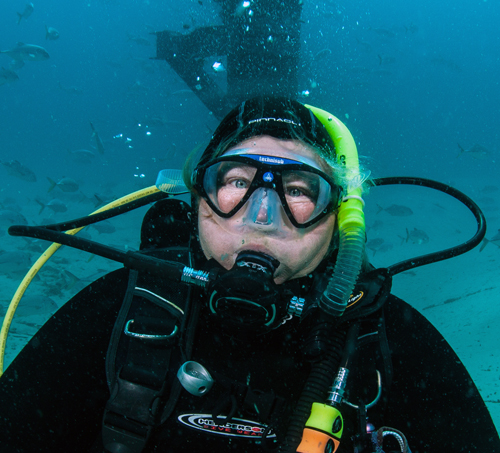 |
Plocamopherus pecoso
Image courtesy of Deb AstonGold Coast Seaway, SW wall,Queensland, Australia
 |
Plocamopherus pecoso Valles & Gosliner, 2006 I want to again thank Deb and Ted Aston for making this presentation possible. Dr. Richard Willan is also acknowledged for confirming Deb's identification! Night dives are the best for finding the Plocamopherus species when they activate their globes and seem to glow underwater. Some glow brighter than others and it is difficult to at times work out which species you have found with P. imperialis, P. ceylonicus and P. tilesii a regular find. This one seem to be extremely bright and on closer observation it didn't seem to fit in with the 3 more commonly found species. A quick email off to Dr Richard Willan confirmed this to be another Plocamopherus species. "... The key diagnostic characters are the orange patches on the body (formed by masses of small dots) and that both the posterior 2 notal processes (which are more or less the same length) have globes. You can see these globes nicely on the right side in photos MG0233 and MG0234. It's already known from tropical northern Australia. In case you wanted to know the derivation of the name. It comes from the Spanish word pecoso which means to have a lot of freckles, and it's a reference to the copious dots all over the body..."
|
Wikipedia lists the following taxonomic features of Plocamopherus pecoso which I can only assume came from the orginal paper by Valles & Gosliner:
"...In life its body shape is elongate, limaciform and anteriorly rounded. The head bears a fringed oral veil with eight short, small and ramified appendages. The oral tentacles are flat. Plocamopherus pecoso has a transparent white background color heavily speckled all over the body with small orange dots. These orange dots become much larger and fewer at the base of the foot. The presence of minute brown dots surrounding the lateral appendages base and along the keel was observed (these brown dots are present all over the body in other specimens of this species). There are some white dots that are usually situated on the notum along a non-continuous line at the margin of both sides of the animal and joining behind the branchial gills. They are also present along the margin of the fringed oral veil on the tip of the tail, tips of branchiae, clavus of the rhinophores, dorsal tubercles and oral veil appendages but they are slightly larger and scarce. The long rhinophores are translucent and speckled with brown at the peduncle and clavus. A white spot is present at the tip of the clavus. The rhinophoral sheath is long. There are three pairs of short lateral appendages; the two posterior pairs have a prominent, brown, rounded globular structure. Usually the posterior most pair has the larger globular structure, although exceptions have been observed. All lateral appendages are slightly ramified and whitish at the tip. There are three principal tripinnate branchial leaves, which do not form a complete circle around the anus. The posterior portion of the foot forms a well-developed keel that has a small crest tipped with white..."
Distribution evidently extends from Australia to the Philippines, Papua New Guinea,and the Marshall Islands.
References:
Valles & Gosliner, 2006. Shedding Light onto the Genera (Mollusca: Nudibranchia) Kaloplocamus and Plocamopherus with Descriptions of New Species Belonging to These Unique Bioluminescent Dorids. The Veliger 48(3): 178-205.
San Diego, CA 92113
June, 2014
Send Mike email at mdmiller@cts.com
Deb Aston on location
 |
I have been a recreational scuba diver since 1983 and together with my husband Ted and dive Buddy Audrey, enjoy many hours underwater. I guess you can call me a dive addict, as I will dive anywhere anytime, and prefer the smaller critters to be found in the marine underworld. It is rare to find me without a camera and still happy to say I see something new on nearly every dive. Our home base dive site is the Gold Coast Seaway, the only shore dive in SE Qld, and an amazing place it is. Since 1 July 2011 I have surveyed the Gold Coast Seaway for sea slugs, to date I have recorded 134 species with many of them first time records for Queensland and some for Australia. Unfortunately the local council wants to build a cruise ship terminal in the seaway and the dredging required will destroy this area as a divesite and nursery area, the fight is on!! More info can be found at http://www.saveourspit.com/ For dives offshore we use our small rigid inflatable boat called 'Duck Diver'. 'Duck Diver' has travelled as far north as Bargara to dive Cochrane Artificial Reef, Qld and south to Jervis Bay, NSW and lots of great places in between. We prefer to explore Australian waters rather than short trips overseas and love the shore diving in South Australia and Mornington Peninsula. Deb Aston can be contacted on dtaston@bigpond.net.au or www.astonunderwaterimages.com Send Deb email at dtaston@bigpond.net.au |

|
